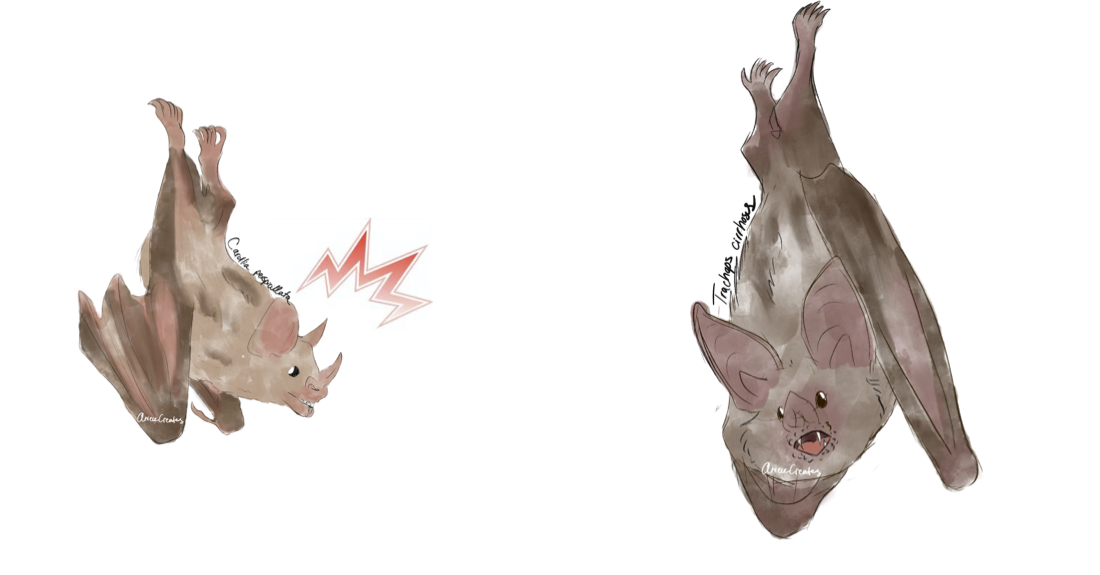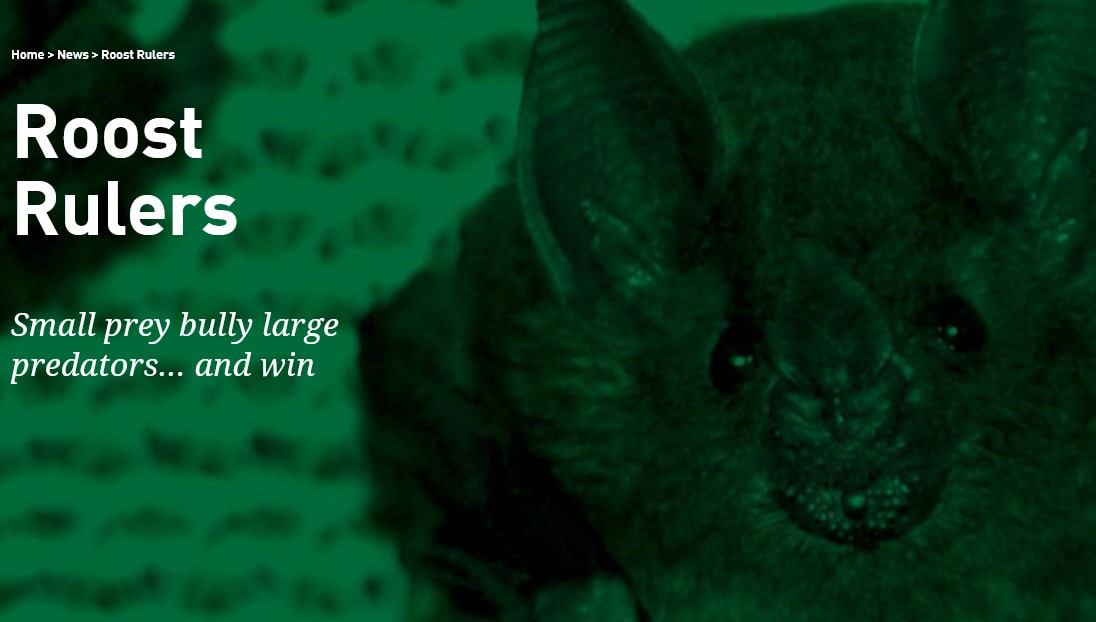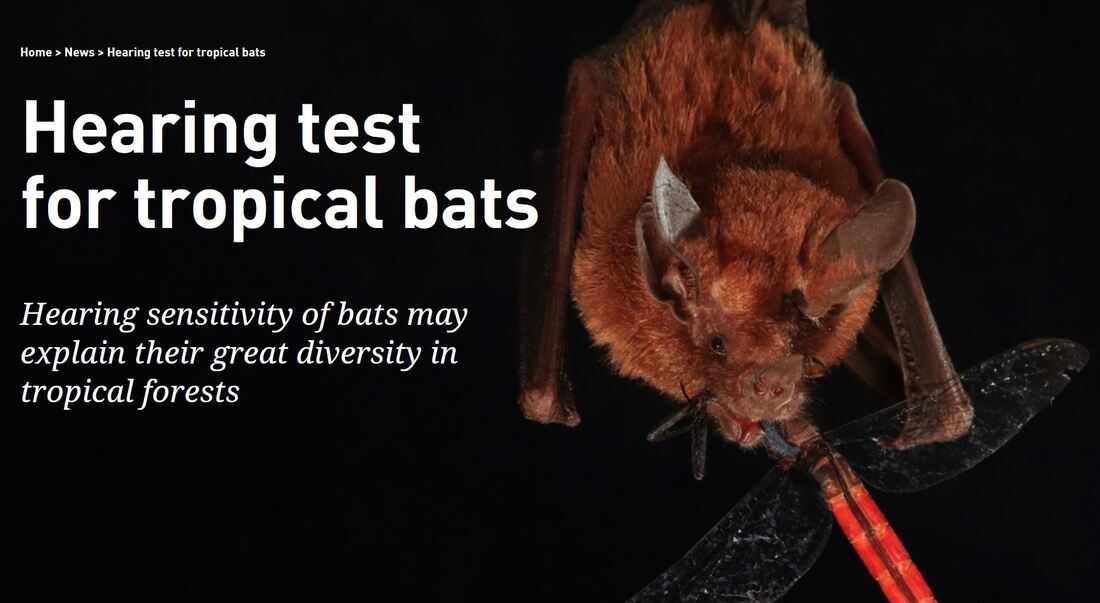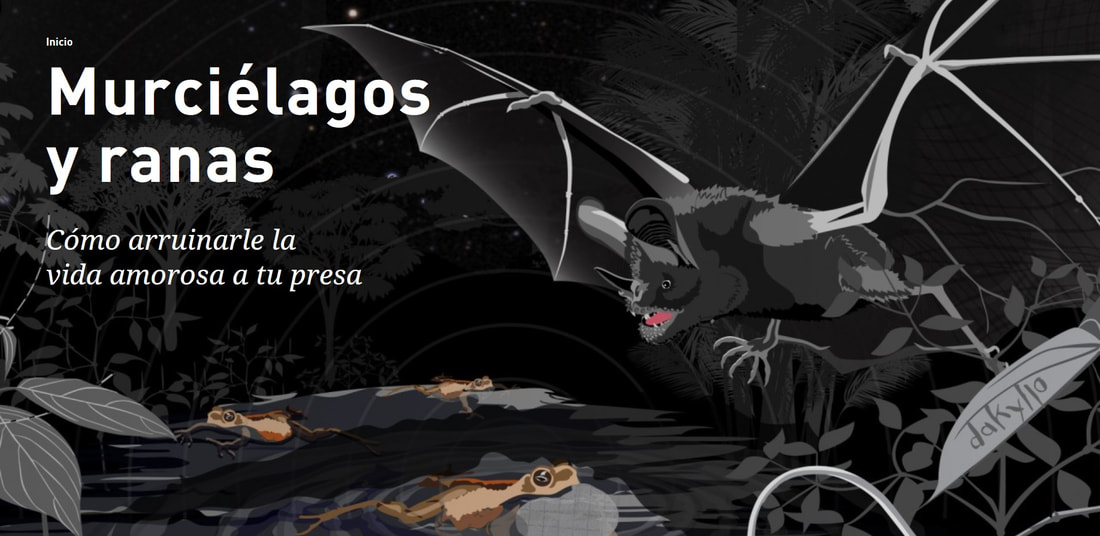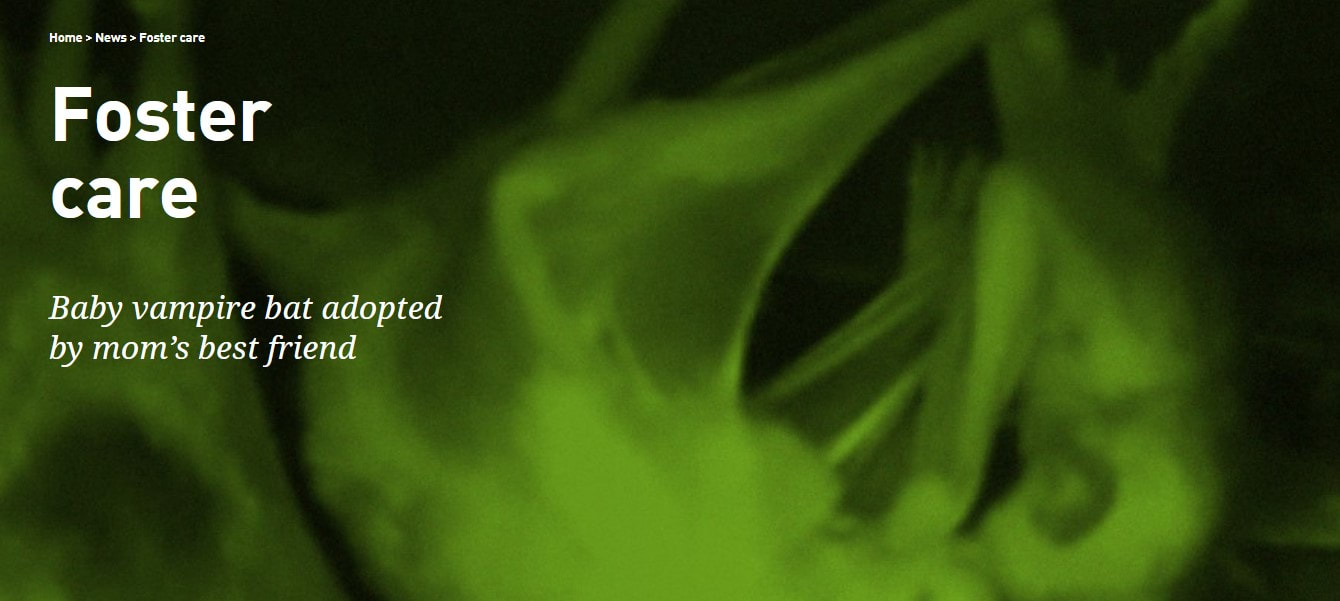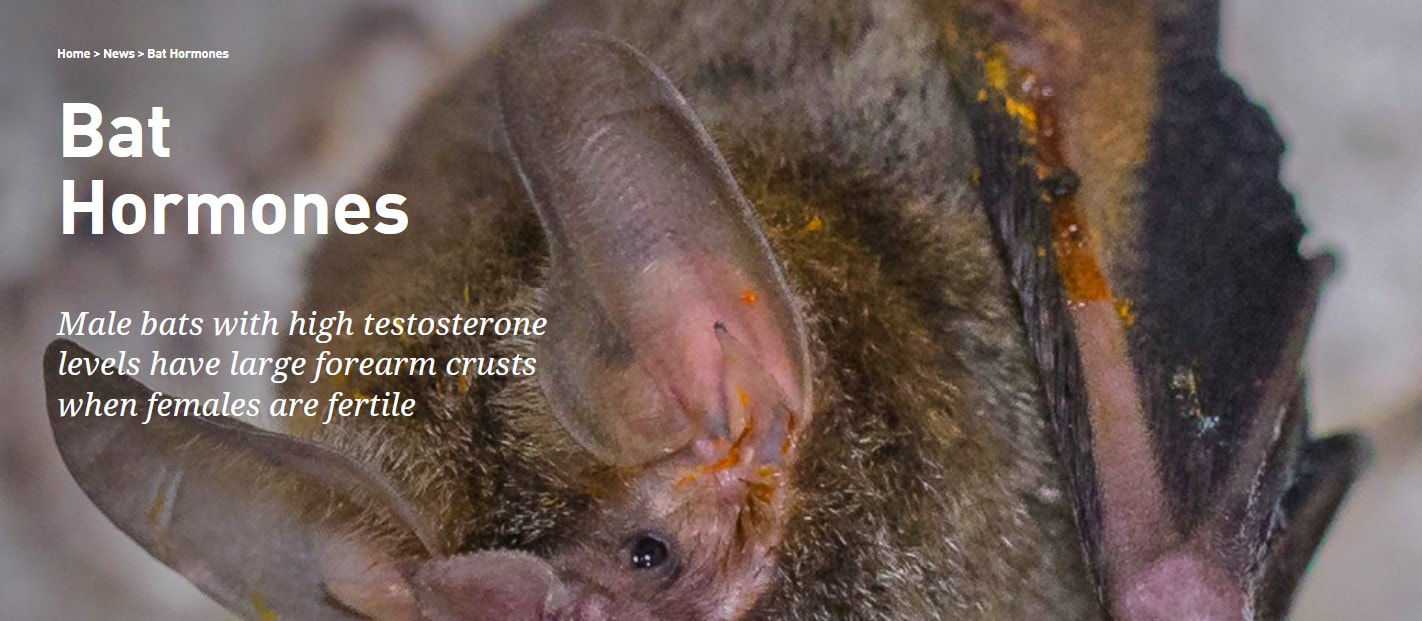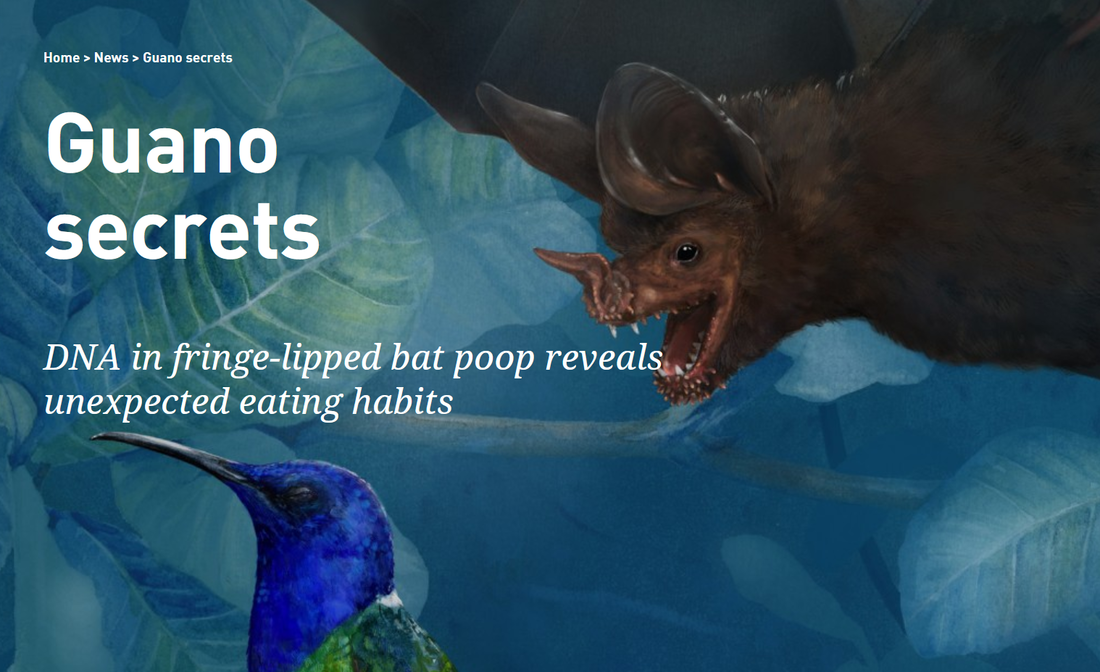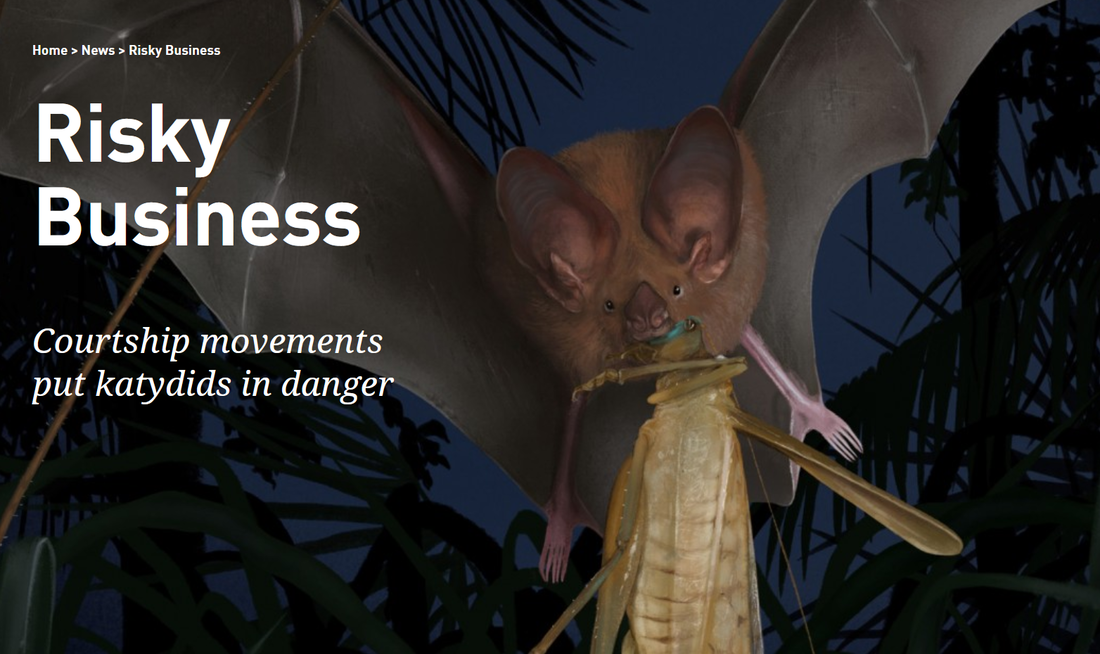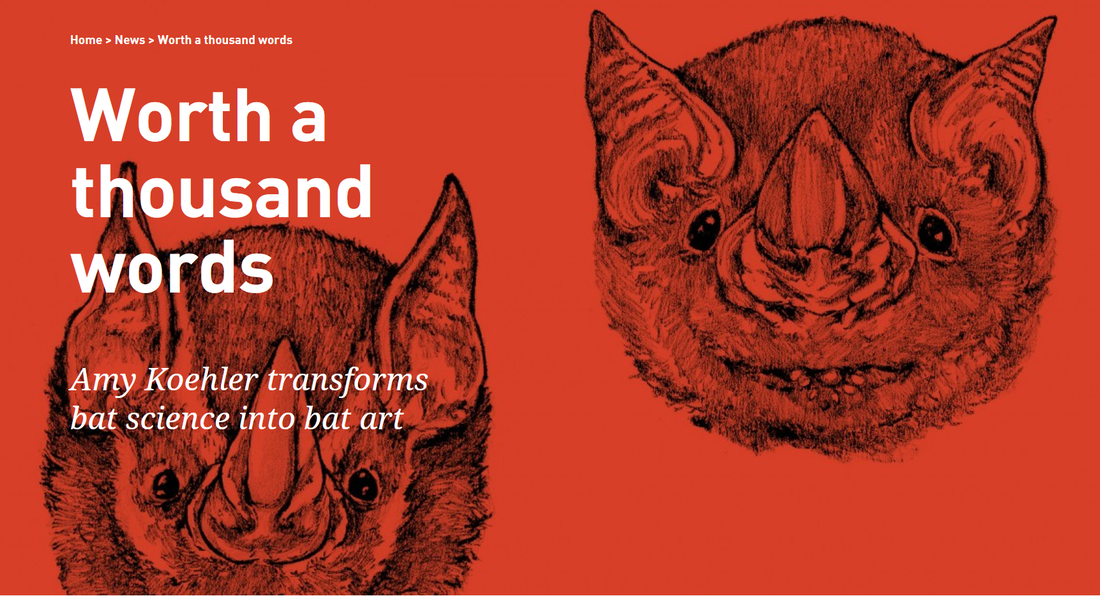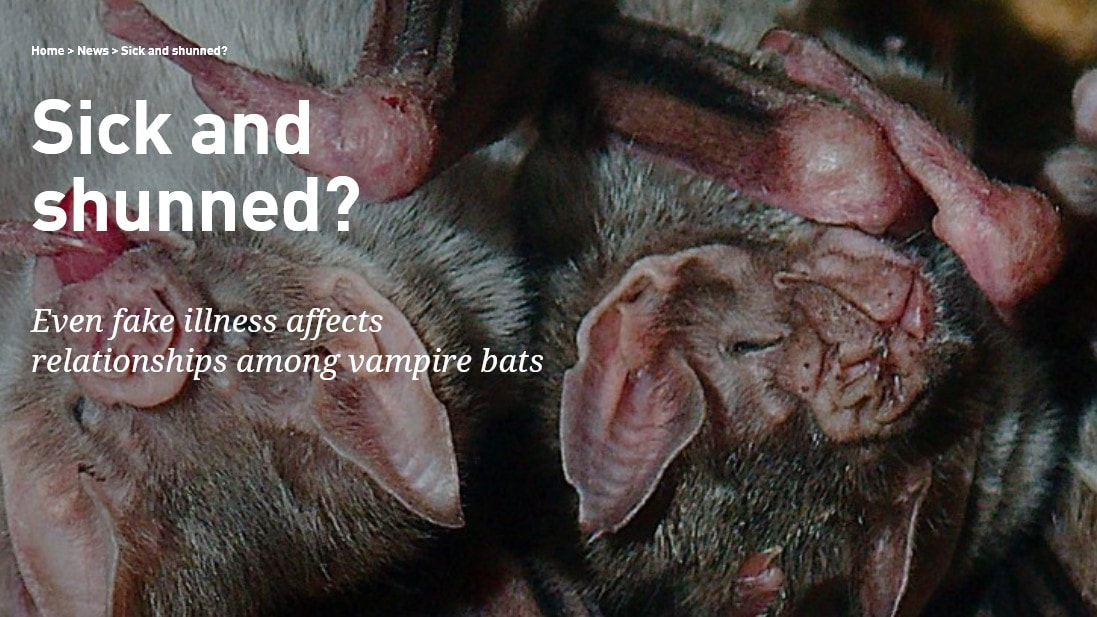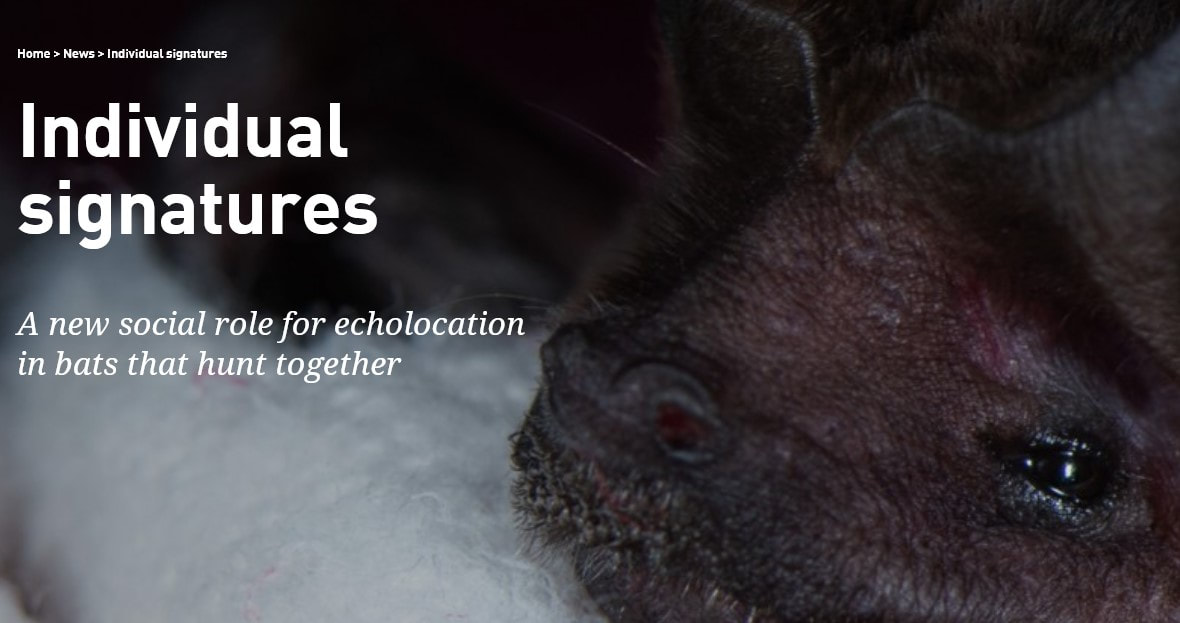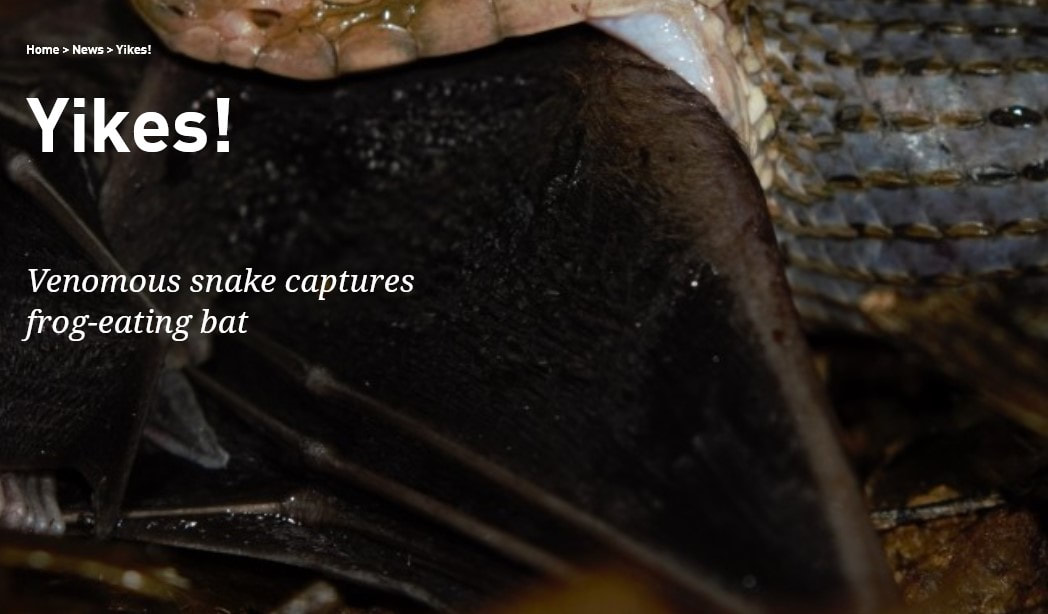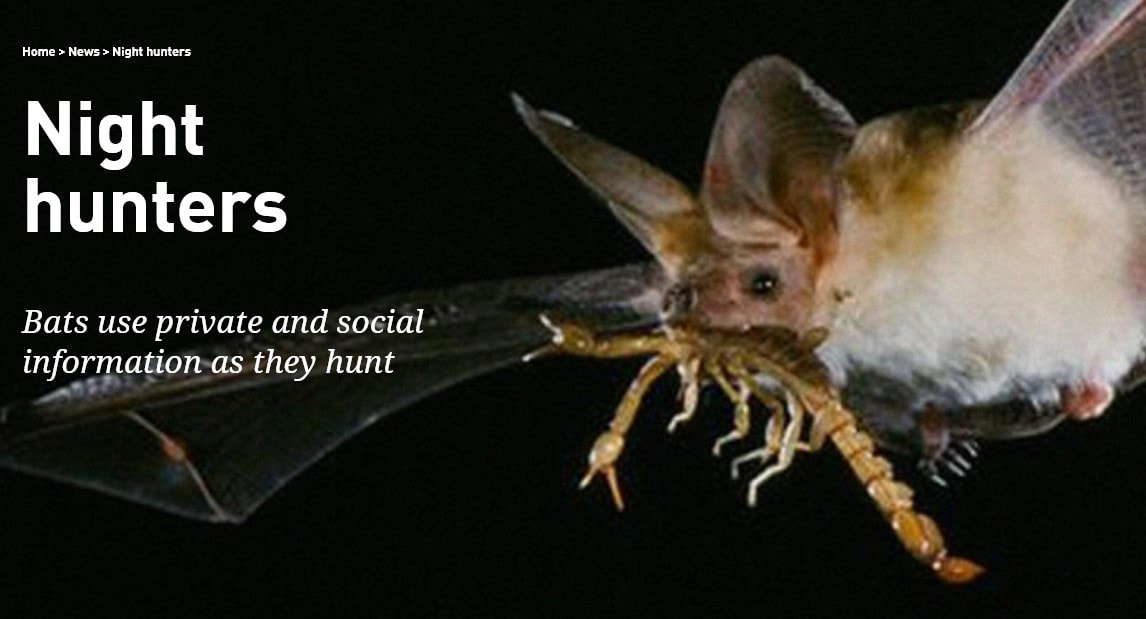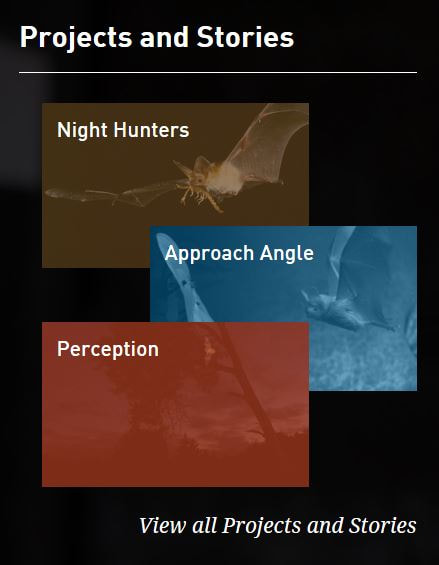
Below we share some of the science/art/education/outreach stories associated with the lab. Also check out our lab instagram account for more bat lab stories! @smithsonianbatlab
We were delighted to join forces with Estudio Nuboso and their amazing team to host a six-week long art-science residency in celebration of 100 years of research on Barro Colorado Island. Together with scientists from the Smithsonian Death Lab and ForestGEO, we worked closely with a group of artists to share our enthusiasm and curiosity for the natural wonders of Barro Colorado Island. The Bat Lab had the honor of pairing with renown Panamanian artist Isabel De Obaldia who has created extraordinary exhibitions on bats, including drawings, animations, and glass sculptures.
As part of a Global South Bats initiative, Briana Sealey describes a paper by Mariana Muñoz-Romo investigating heterospecific aggression among bats that share roosts: Muñoz-Romo M, Cohen G, Page RA. 2022. Place your bets: a small prey faces large predators. Behaviour. 159: 989-997, PDF. Also see coverage of this cool study in the New York Times.
Nair Cabezón, a member of an indigenous Wounaan community located just upriver from the town of Gamboa, Panamá, started working full time as a Research Technician on the Bat Roosting Project in the Gamboa Bat Lab in the beginning of 2022. She commutes to work by boat on the Chagres River, and dedicates her time to understanding bat ecology, evolution and behavior. Nair has become an invaluable member of the Gamboa Bat Lab - it's been great having her a part of this team! A video showing her work in action above.
May Dixon used cell phone rings tones to investigate long-term memory, and found that frog-eating bats in nature can remember a specific acoustic cue associated with a food reward for over four years (!) without subsequent reinforcement. Dixon MM, Jones PL, Ryan MJ, Carter GG, Page RA. 2022. Long-term memory in frog-eating bats. Current Biology. 32, R557-R558. PDF. Media coverage here.
Mariana Muñoz-Romo uses artificial roosts in the rainforest of Soberanía National Park to observe natural bat behaviors in the wild, here documenting antagonistic interactions between two bat species vying for position within a roost. Muñoz-Romo M, Cohen G, Page RA. 2022. Place your bets: a small prey faces large predators. Behaviour. 159: 989-997. PDF. Also see Shriek! Slap! Pow! The Small Bat Wins for coverage of this story in the New York Times.
Inga Geipel discusses the role of hearing sensitivity in niche differentiation, and how what you are able to hear shapes which prey you consume. This study examines how variation in sensory abilities help to explain how so many bat species can co-exist in the tropical rainforest: Geipel I, Lattenkamp EZ, Dixon MM, Wiegrebe L, Page RA. 2021. Hearing sensitivity: an underlying mechanism for niche differentiation in gleaning bats. Proceedings of the National Academy of Sciences. 118, e2024943118. PDF. Media coverage here.
Thanks animation by Andy Quitmeyer, Damond Kyllo's BAT FROG book is now available, not only in printed form, but also now as an animated video! Check out the English and Spanish versions here, and go to our Resources for Kids page to print your own copy of this beautiful book.... Many thanks to the National Science Foundation and the Smithsonian Tropical Research Institute for the funding to make this happen.
Imran Razik discusses a sad but serendipitous event that happened during his observations of vampire bats in the Gamboa flight cage. When the mother of a 19-day old pup unexpectedly died, her 'best friend' adopted the orphan. This unrelated friend started lactating and succeeded in raising the baby. While adoption in vampire bats has been documented before, Imran's observations were truly impressive. Because he had intensively observed the behavioral interactions of this colony for six hours a day over a period of four months, he was able to carefully document the social behavior of each individual. It turned out that the two adult females had had a close social bond. BD (the friend who adopted the baby) groomed and fed Lilith (the mother that died) more than any other bat in the colony; Lilith in turn groomed BD almost the same amount. Imran's results suggest that non-kin adoption can be motivated by a prior history of cooperative interactions. Read Gerry Carter's excellent blog post on this subject, as well as coverage in Forbes and Smithsonian Magazine. Razik I, Brown BKG, Page RA, Carter GG. 2021. Non-kin adoption in the common vampire bat. Royal Society Open Science. doi: 10.1098/rsos.201927. PDF
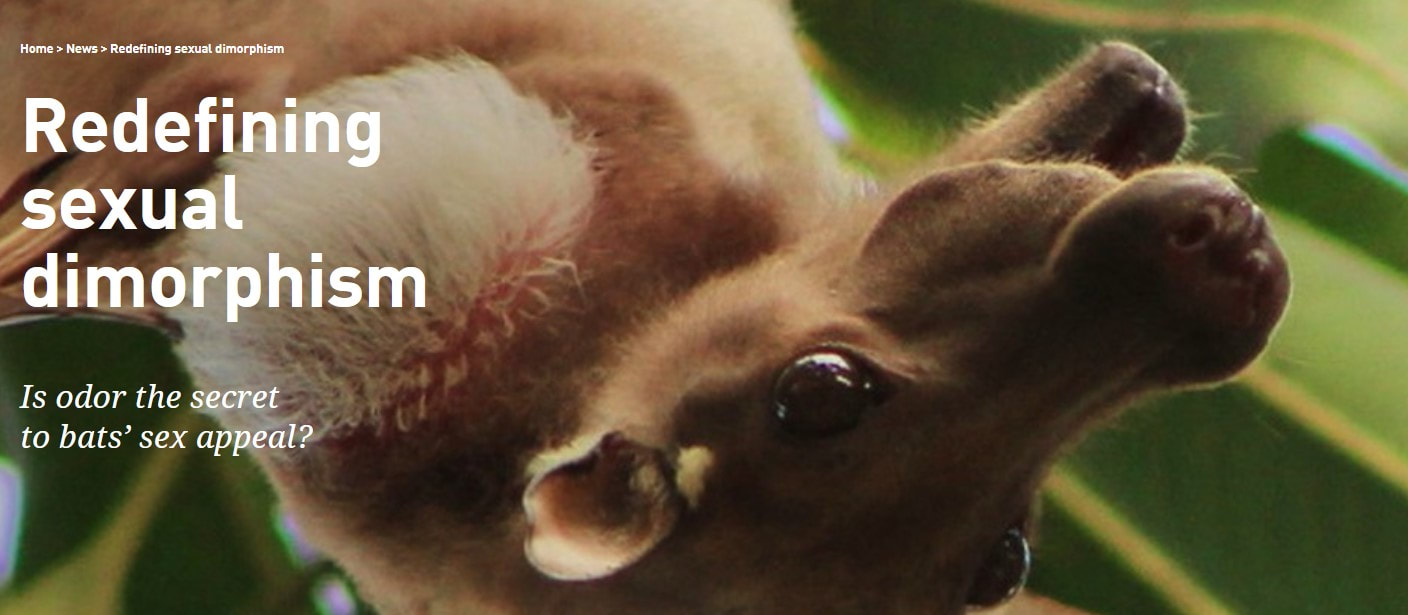
Mariana Muñoz-Romo discusses the massive literature review she conducted, synthesizing decades of research, identifying diverse glands and non‐glandular odor‐producing structures across the Order Chiroptera. Mariana's review unveils the extraordinary sexual dimorphism that has been observed in Chiroptera to date, identifying not only target body parts where sexually dimorphic traits are likely to be found, but also critical avenues for future investigation and discoveries: Muñoz-Romo M, Page RA, Kunz TH. 2021. Redefining the study of sexual dimorphism in bats: following the odour trail. Mammal Review. doi: 10.1111/mam.12232. PDF
Do bats make rational decisions? Claire Hemingway discusses her experiments investigating how different bat species make foraging decisions, and how their choices are shaped by the presence of a competitive decoy. Hemingway, CT, Aversa J, Ryan MJ, Page RA. 2021. Context-dependent preferences in wild fruit bats. Animal Behaviour. doi: 10.1016/j.anbehav.2021.06.016. PDF
Mariana Muñoz-Romo discusses recent discoveries documenting high levels of testosterone in male fringe-lipped bats that exhibit large forearm crusts. Large crusts and high testosterone levels are especially pronounced when females are in estrus, corroborating behavioral evidence that the forearm crust plays a critical role in reproduction: Muñoz-Romo M, Flores V, Ramoni-Perazzi P, Page RA. 2020. The crust of a male: does size matter when females are fertile? Behavioral Ecology and Sociobiology. 74: 1-10. PDF
Patricia Jones discusses the secrets that can be discovered through the DNA found in poop in their new article: Jones PL, Divoll TJ, Dixon MM, Aparicio D, Cohen G, Mueller U, Ryan MJ, Page RA. 2020. Sensory ecology of the frog-eating bat, Trachops cirrhosus, from DNA metabarcoding and behavior. Behavioral Ecology. 31: 1420–1428. doi: 10.1093/beheco/araa100. PDF. Illustration by 2020 Bat Lab Artist-in-Residence, Amy Koehler.
Inga Geipel discusses her new study on the predation risks associated with courtship movements. Geipel I*, Kernan CE*, Litterer AS, Carter GG, Page RA#, ter Hofstede HM#. *Co-first authors; #Co-last authors. 2020. Predation risks of signalling and searching: bats prefer moving katydids. Biology Letters. 16: 20190837. PDF. Illustration by 2020 Bat Lab Artist-in-Residence, Amy Koehler.
We were delighted to host Amy Koehler as our first Bat Lab Artist-in-Residence. Here, Amy discusses her career path and why art plays such an important role in science.
Sebastian Stockmaier investigated how sickness affects social interactions in a colony of vampire bats, showing that the effects
of sickness on social network structure can differ depending on the ‘who, what, and how’ of social interactions. Stockmaier S, Bolnick DI, Page RA, Carter GG. 2020. Sickness effects on social interactions depend on the type of behaviour and relationship. Journal of Animal Ecology. 89: 1387-1394. doi: 10.1111/1365-2656.13193. PDF
of sickness on social network structure can differ depending on the ‘who, what, and how’ of social interactions. Stockmaier S, Bolnick DI, Page RA, Carter GG. 2020. Sickness effects on social interactions depend on the type of behaviour and relationship. Journal of Animal Ecology. 89: 1387-1394. doi: 10.1111/1365-2656.13193. PDF
Jenna Kohles shows that the socially foraging bat, Molossus molossus, can discriminate between group members based on the search-phases of their echolocation calls. Kohles JE, Carter GG, Page RA, Dechmann DKN. 2020. Social foraging bats discriminate between group members based on search-phase echolocation calls. Behavioral Ecology. 31: 1103-1112. doi: 10.1093/beheco/araa056. PDF
Murciélagos: magníficos, fascinantes, y esenciales: Mariana Muñoz-Romo discusses the fascinating world of bats. She details the critical ecosystem services bats provide as seed disperses, pollinators and controllers of insect populations. And convinces us that instead of being afraid of bats, we should be fascinated by them and protect them.
Bats and zoonotic disease: Rachel Page talks about the spectacular diversity of bats, their extraordinary immune systems, and what their ability to harbor pathogens often without getting sick themselves means for the spread of zoonotic disease. The upshot? Bats are not to blame for covid-19. Humans are. Which gives us tremendous agency and hope in addressing the problems we've created through globalization, urbanization, wildlife trafficking and the destruction of natural habitats.
Bat Perfume: Mariana Muñoz-Romo explains her investigations into the biological significance of the odorous golden crust found on the forearms of reproductive male fringe-lipped bats, Trachops cirrhosus.
Are bats in the canopy eavesdropping on the mating signals of their prey? Amanda Savage investigates how gleaning bats find their prey at different heights in the forest, and whether they eavesdrop on katydid mating signals, not just near the forest floor, but high up into the canopy as well.
Searching for glass frogs in the rainforest along Pipeline Road one evening, Hubert Szczygieł chanced upon a spectacular observation - a fer-de-lance, Bothrops asper, feeding on what very likely was a frog-eating bat, Trachops cirrhosus, at a túngara frog chorus. Szczygieł H, Page RA. 2020. When the hunter becomes the hunted: foraging bat attacked by pit-viper at frog chorus. Ecology. The Scientific Naturalist. e03111. doi: 10.1002/ecy.3111. PDF
In the arms race between predators and prey, each evolves more and more sophisticated ways of catching or escaping from the other. Rachel Page, staff scientist at the Smithsonian Tropical Research Institute and Ximena Bernal, associate professor at Purdue University, review in Functional Ecology how bats use both private and social information to attack their prey. Page RA, Bernal XE. 2020. The challenge of detecting prey: Private and social information use in predatory bats. Functional Ecology. 34: 344-363. PDF.
Bound by Blood: Simon Ripperger and Gerry Carter explain how the cooperative bonds vampire bats form in captivity persist upon release in the wild. Ripperger SP, Carter GG, Duda N, Koelpin A, Cassens B, Kapitza R, Josic D, Berrío-Martínez J, Page RA, Mayer F. 2019. Vampire bats that cooperate in the lab maintain their social networks in the wild. Current Biology. 10.1016/j.cub.2019.10.024. PDF
When does noise serve as an informational cue? Inga Geipel investigates how bats use the sound of rain to time their emergence from the safety of the roost. Geipel I, Smeekes MJ, Halfwerk W, Page RA. 2019. Noise as an informational cue for decision-making: the sound of rain delays bat emergence. Journal of Experimental Biology. jeb.192005. PDF
Sexy city frogs: Wouter Halfwerk describes the mating preferences, and the risk of predation and parasitism, in city versus forest frogs (Halfwerk W, Blaas M, Kramer L, Hijner N, Trillo PA, Bernal XE, Page RA, Goutte S, Ryan MJ, Ellers J. 2019. Adaptive changes in sexual signaling in response to urbanization. Nature Ecology & Evolution. 3: 374-380. doi:10.1038/s41559-018-0751-8. PDF)
Mother-pup interactions: Jenna Kohles discusses fledging behavior in baby fruit-eating bats (Kohles JE, Page RA, Dechmann DKN, O'Mara MT (2018) Rapid behavioral changes during early development in Peters' tent-making bat (Uroderma bilobatum). PLoS ONE 13(10): e0205351. doi: 10.1371/journal.pone.0205351. PDF)
SMITHSONIAN Meet the Scientists: STRI Staff Scientist Rachel Page explains how she became a bat biologist.
For more stories on our work, see PAGE LAB Projects and Stories on the STRI webpage:
For more stories on our work, see PAGE LAB Projects and Stories on the STRI webpage:

